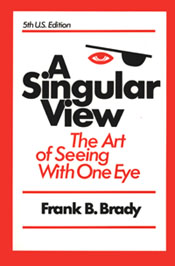
|
Board Certified Ocularist, the American Society of Ocularists |
|
 |
|
Ocular Prosthesis...otherwise known as an artificial eye, is a plastic prosthesis used when an eye is surgically removed. During surgery, a ball implant is inserted into the eye socket to fill the area the eye once occupied. An ocular prosthesis is then molded to fit in front of the implant. It occupies the space between the eyelids and the skin (conjunctiva) covering the implant. |
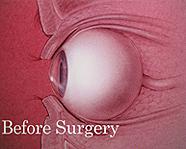
|

|
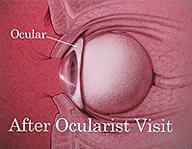
|
|
The ocular prosthesis is generally made four to six weeks after surgery in order to allow the socket tissues to heal adequately. Prior to that time, a thin plastic plate, called a conformer, is sometimes worn in place of the prosthesis. This prevents shrinkage of the tissue and helps to prepare the socket for ocular placement.
Until the ocular prosthesis is fitted, the upper eyelid can be droopy in appearance. The prosthesis will help support the eyelid and allow the lids to open and close normally.
|
|
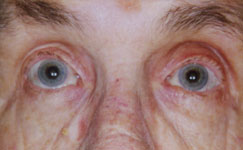 |
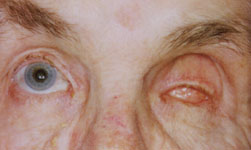 |
|
We have a short video which describes ocular prosthesis in greater detail. If you would like us to send you a copy, please call our office.
Scleral Cover Shell Prosthesis...also known as a "cover shell", is a thin, plastic prosthesis used when an eye is malformed as a result of a birth defect, or becomes non-functioning due to subsequent illness or injury. In such cases, the non-functioning eye is left within the eye socket. A prosthesis can then be molded to fit between the lids and the blind eye.
|
|
 |
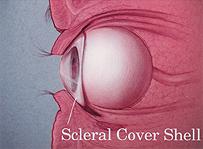 |
|
Scleral cover shells fit directly over the malformed eye. Sometimes a "trial shell" is fashioned to allow the eye to grow accustomed to the direct contact of the prosthesis.
Cover shells impart a better cosmetic appearance by closely resembling the remaining good eye, while leaving the affected eye in the socket.
|
|
 |  |
|
A detailed brochure about scleral cover shells is also available from our office. Please call us if you wish to receive a copy. |
|
|
|
|
Plastic Eye Care InformationYearly Checkups- It is recommended that you return to our office once a year to have your prosthesis polished. Usually there is a significant build-up of salt and protein deposits on the eye in one year's time. Polishing removes these potentially irritating deposits. The ocularist will also evaluate the eye's fit and appearance. Sometimes a build-up or adjustment may be called for, due to subtle changes in the eye's socket tissue.Removal and Cleaning- At one time, all artificial eye wearers were told to remove and clean the prosthesis on a regular basis. It has since been learned that removal on a regular basis keeps the eye socket mildly irritated. Today's artificial eyes generally need less attention due to improved fitting and polishing techniques. Many people do not feel the need to remove their prosthesis between visits to their ocularist. Removal and reinsertion of the prosthesis is an easy process. Your ocularist can show you the correct method. If you do remove your artificial eye, be sure to thoroughly wash your hands first; this will reduce the risk of infection and irritation. Eye Drops- A few artificial eye wearers experience "dry eye" due to lack of lubrication. In such cases the ocularist will often recommend an aqueous lubricating solution such as artificial tears. In cases where the individual cannot close the eyelids all the way or the eyelids do not close during sleep, an oily lubricant may be recommended. Storing the Eye- If the plastic eye must be left out of the socket overnight or longer for any reason, store it in water or in a contact lens soaking solution. Other Points to Remember
|
|
| We have a variety of cleaners, irrigation solutions and lubricants for the prosthetic eye wearer. Please call (703) 352-3520 should you need additional information on prosthetic eye care. | ||||

|

|

|

|

|
|
|
|
|
"A Singular View" by Frank R. Brady "A Singular View" is sure to interest patients who have lost an eye and it should be of immeasurable help to parents who wonder how their children or relatives can cope with the problem that the loss of an eye suddenly thrusts upon them. (Large print, soft bound book, 131 pages) . New Sixth Edition, 2004. |
 |
|
 |
|

